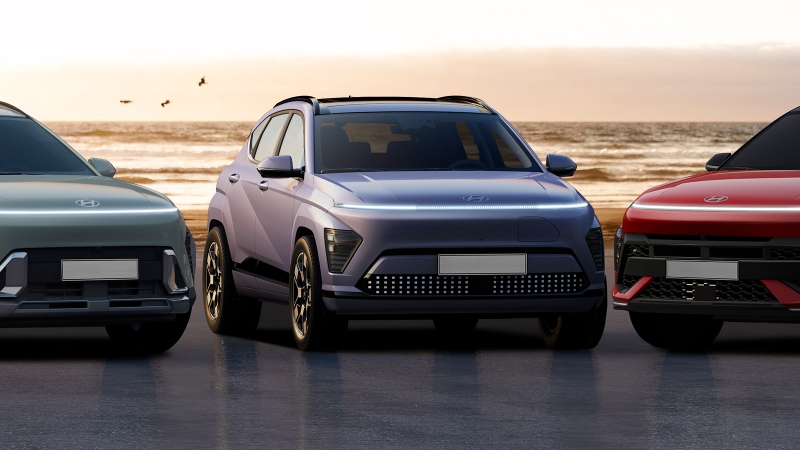











Hyundai i10 Review
The Hyundai i10's a brilliant reminder that city cars can be practical, affordable, fun to drive and packed with technology.
It's got impressive rear-seat space, a decent boot for a small car and the latest smartphone mirroring technology. Sadly the best engine choice is restricted to top-spec models.
- Roomy back seats for a small car
- Punchy turbocharged engine option
- Excellent smartphone mirroring tech
- Blobby looks
- Best engine only available on top trim level
- Entry-level engine is very slow
Should I buy a Hyundai i10?
You could argue that the i10 is the least ‘on-brand’ car for Hyundai. These days, it seems as if the Korean reliability merchants are better known for wacky looking EVs and surprisingly fun hot hatches, but the affordable, tiny i10 is still on sale – and for very good reason.
It’s a brilliant do-it-all city car, a rival to the likes of the Kia Picanto – with which it shares many components – and the Volkswagen Up. It also feels surprisingly posh for such a small car. Hyundai’s fitted all i10 models with reversing cameras and touchscreen displays complete with wireless Apple CarPlay and Android Auto – we’ve driven £80,000 cars that don’t have these, so finding such niceties in a sub-£16k city car feels like a bargain.
It’s also roomy inside, and tall adults won’t feel squished in the rear seats. The boot’s an okay size for a small car, and it even feels stable and grown-up out on the motorway. Sure, there are some weedy engine choices and it’s a pity the best engine – the turbocharged 1.0-litre with 100hp – is only available on top-spec N Line cars.
But, all things considered, the Hyundai i10 is one of the very best city cars on sale.
Interior and technology
We’ll get the bad bits out the way first. The i10’s cabin does have some cheap, hard-feeling plastics dotted here and there, but you have to remember that this is an affordable car and the entry point to Hyundai’s car lineup. But, otherwise, it’s a very good cabin.
The seats in all models are comfortable and it’s easy to get settled in even if you’re a tall adult. All models get air con, albeit manually adjustable air-con on entry-level Advance models. Mid-spec Premium and top-spec N Line get proper climate control.
Surprisingly for a small car, all i10 models get a sharp eight-inch infotainment screen on the dashboard – and, even more shockingly, entry-level models get wireless Apple CarPlay and Android Auto smartphone mirroring systems. Pick a mid-spec Premium or top-spec N Line model and you’ll also get a wireless phone charging pad. All models get a fairly average four-speaker sound system but, generally speaking, the i10 has one of the most high-tech cabins in this part of the market.
Practicality
As we’ve mentioned, the front seats of the i10 are comfy, but so are the rear ones. Access to the back is decent thanks to wide-opening doors, but the real surprise is that a 6’3” adult can comfortably sit behind their own driving position with a few inches of kneeroom to spare. And, while the i10’s high roofline makes the car look a little boxy and awkward on the outside, it means rear-seat passengers won’t be touching the roof with their scalps. You wouldn’t want to make three adults sit in the back of an i10 for very long because it’s a narrow car, but two passengers can sit back there for long periods without much discomfort.
The i10 gets a 252-litre boot which is about as big as you’ll get in a car this size – it’s on par with the VW Up and Kia Picanto, and vastly more useful than the Fiat 500’s 182-litre excuse for a boot. The i10’s load bay doesn’t have any hooks, tie-down points or strings to hold the parcel shelf out of the way when it’s open, but that’s par for the course at this price point. It’ll hold a large suitcase if you drop it in sideways, and you can flip the rear seats down in all models.
Engines and performance
There are three engine choices for the i10. The entry-level three-cylinder 1.0-litre petrol has a fairly meagre 67hp. It can feel underpowered and a bit lumpy even around town, and if you’re going to do much dual carriageway driving we’d opt for the four-cylinder 1.2-litre option with 84hp. It’s a fair bit brisker and doesn’t need working quite so hard.
The best pick though is the 1.0-litre turbocharged three-cylinder with 100hp. Sadly only available in the most expensive N Line models, it puts some pleasing pep into the i10’s step, while still returning a reasonable 52mpg compared to the 55-57mpg you’ll see with the other two engines. It makes for a more relaxed drive and feels pretty powerful on the move, even if the 0-62mph time is still slightly over 10 seconds.
A word of caution has to be given over the i10’s automatic gearbox option. It’s an old-school automated manual which can feel jerky to use, slows acceleration quite noticeably and it does spoil the i10 driving experience somewhat. Stick to a manual if you can.
Driving and comfort
It’ll come as little surprise to hear the i10 is a very easy car to drive. The clutch and gearbox are nice and light, and there’s a good view out of all corners of the car – and you have a reversing camera on every model. Comfort on long trips is decent by small-car standards thanks to standard-fit cruise control, but we wish Hyundai would fit a six-speed gearbox to lower engine revs at 70mph.
Over bumpy roads, the i10 feels stable and confident, though you will get jiggled around a bit more than in a larger car, say a Ford Fiesta or Hyundai’s own i20. By and large though, it feels like a grown-up car that can handle motorways and sidewinds with aplomb.






























































